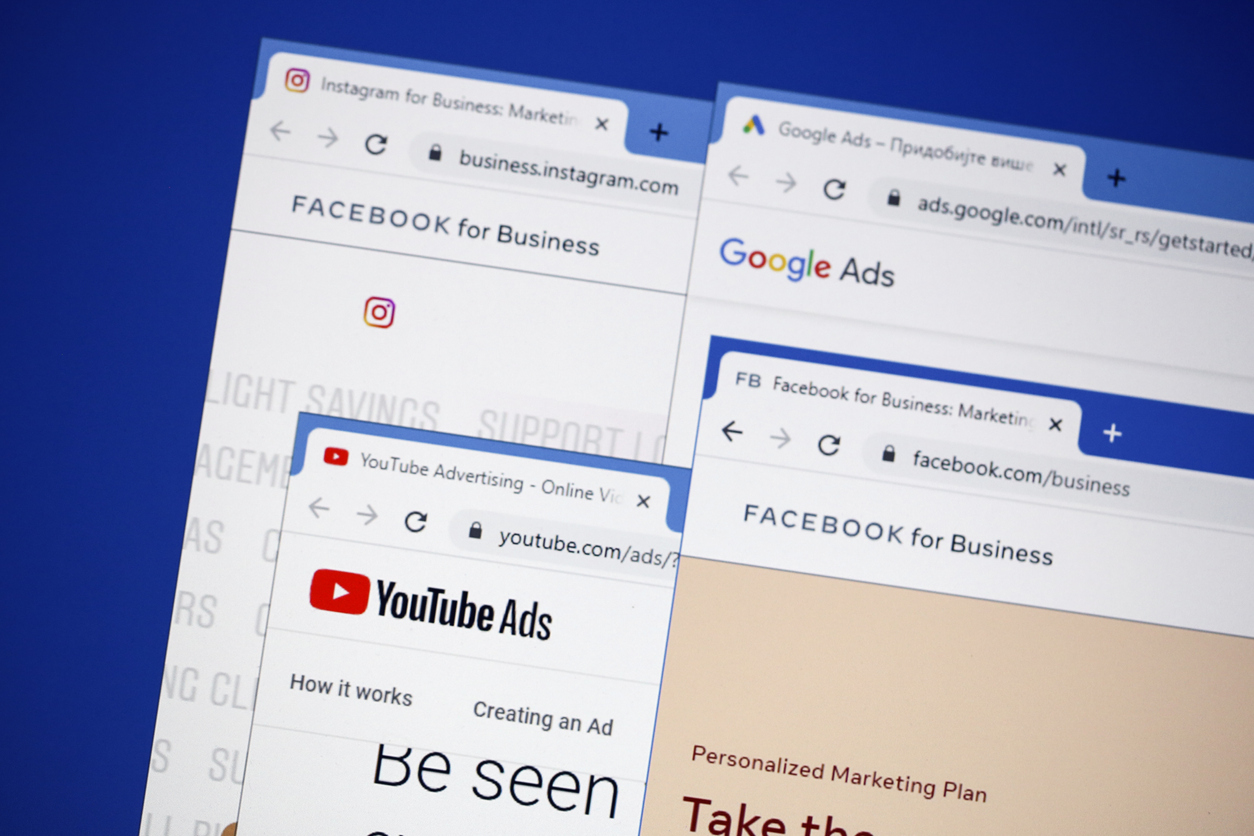Effective Audience Targeting in Digital Advertising Platforms
08/30/22 | 8-minute read

Have you ever seen an ad for something that you were just talking about in person pop up in your Facebook newsfeed? Or what about sitting in your car googling “hairdressers near me” and in minutes you’re off to get a new haircut thanks to a Google ad. That’s the power of detailed targeting for paid ads.
The age of social media and smartphones has revolutionized how advertisers can reach their target audiences. Far from the ancient “spray and pray” model of blindly placing ads in mass media vehicles and hoping that the right people might see them, digital platforms can offer a much more relevant advertising experience, which means business owners can more accurately show their ads directly to their target audience. Accurate targeting also means lower costs for advertisers – making it more accessible to small businesses.
While a combination of organic and paid tactics always works best to win your target audience into paying clients, utilizing paid advertising and detailed targeting can help you generate high-quality leads in a short amount of time. Even if you aren’t running the ads themselves it’s important to know what goes on behind the scenes on advertising platforms to know what type of information about your audience is important to have on hand.
Although, before we get into all the details about targeting paid ads, let’s first address a crucial point. As we all probably remember, Zuckerburg and Cambridge Analytics made the news a while back, and that was the pinnacle of society’s concerns for privacy rights in the digital space. As a small or medium-sized business owner, it can be scary to dip your feet into these waters, but it is also necessary to be able to use paid advertising to your advantage. In the world of paid ads, if you do things right, you don’t have to worry about privacy concerns and breaches.
Now that’s cleared up, let’s break down everything you need to know about targeting paid ads.
Finding Your Target Audience
Knowing who needs your product or service is the most important step of any targeting, let alone any marketing. If you have never heard of a Marketing Persona, chances are that your current marketing agency is wasting your money (seriously, come work with us instead!). To put it in simple terms, a Marketing Persona is a fictional representation of your ideal customer.
Creating a persona (or several, depending on your product or service) makes it easier to understand what are your target audience’s main characteristics, challenges, frustrations, habits, and demographics. By understanding those, we can also understand how, when, and where to target them.
Although, just painting a picture of what your target audience might look like isn’t enough. It is important to back your personas with data, either using your current customer base as the sample, or researching customer data in your industry to make sure that you’ll be targeting the right audience, and not the audience that you thought you wanted to target. And of course, since your target audience is a group of people, their likes, interests, and characteristics are likely to change over time, so continuously listening to what your customer base is saying is crucial.
Targeting on Different Platforms
As a business owner, especially operating in the B2B space, choosing the right ad platform can help you better reach your audience and get the most out of your budget. It all depends on how well you know your target audience – where do they find their information? What platforms do they trust? The way that people interact with different ad platforms determines what kind of information these platforms collect, and also what type of targeting is available to advertisers.
Take Meta’s wide range of properties: Facebook, Instagram, WhatsApp and Messenger. They are highly social platforms that collect mostly lifestyle-related information on their users. They allow targeting by interests (people who like fashion-related pages, foodies enthusiasts, frequent travellers), demographics (age, gender, relationship status), and life events (people who recently moved, ex-pats, recently engaged).
In the case of Google’s properties: Google Search and Display, Gmail, and Youtube, targeting is understandably more often focused on keywords and search behaviours. However, to get the best possible results out of your Google advertising strategy, the platform does allow for more sophisticated audience targeting tactics. For example, it’s possible to bid higher or lower for certain audience segments (like age, gender, parental status, or even industries and interests), as well as limiting ad impressions to specific audiences in addition to the keyword strategy. For video and display, it is also possible to choose what kind of content your ads will show.
More niche platforms will offer more specific ways to target your audience. LinkedIn for example focuses solely on professional characteristics, which can be highly beneficial for B2B marketing. While you can target audiences based on their industries, job titles, job seniority, and even company revenue, more basic personal details are not available, such as specific age, or personal interests.
Knowing each platform’s limitations and tools is very important in determining your strategy. But going one step further and knowing the several little categories that, combined, make up your target audience is THE key to finding and fine-tuning the ideal targets for your campaigns.

Retargeting
You might have heard about the importance of owning your customer data, in the sense of not just relying on third-party platforms to be able to reach out to your customer base. For many small and medium-sized businesses, that means building their e-mail list of leads and past customers, while for larger organizations it means owning their raw analytics data.
If you are collecting data from past or potential customers, one way to use that data beyond your email marketing strategy is to create ads that retarget people who have already interacted with your business, to keep your brand in their minds.
By feeding hashed lead email lists or analytics data to advertising platforms, it is possible to create highly qualified audience lists that can be served relevant ads depending on where in the sales funnel they currently are, or what pages of your website they have visited before.
Lookalike Audiences
If you are not interested in targeting people who already know about your brand – or you are interested in capturing brand new audiences as well as capturing audiences that are more likely to be interested in your product, lookalike audiences are something you should be looking into creating.
Lookalike audiences (sometimes also called similar audiences) are segments created based on the characteristics and demographics of your already existing customer base. Once you create a custom audience using your data, from an email list or website traffic data, the platform will try to match your audience to their data and find people with similar interests, characteristics, and behaviours.
Exclusions and Limitations
Most business owners are pretty well-versed in who they want to target. But have you ever wondered who you don’t want to see your ads? For example, when launching a promotion for new customers only, you might want to make an effort to exclude your current customer base from the audience to make sure that your ad budget is as well-used as it can be.
Have you ever seen an ad, bought the product, and then kept seeing the same ad again every day, to the point that you even started to hate it? Exclusions based on previous ad interactions help reduce unnecessary impressions and ad over-exposure and are especially relevant when your goal is a one-time action – like subscribing to a newsletter or downloading a PDF.
When we talk about excluding people from your audience, it’s important to also note that it’s not the same as being exclusionary. Platforms are making efforts to stop advertisers from discriminating against people on their targeting. Because of that, certain demographics, such as race, religion, political inclination, sexual orientation, and other personal characteristics are NOT available as targeting options.
And for certain topics – like employment, political issues, housing, and healthcare – some of the regular targeting options are not available, to avoid discrimination based on gender, age, income and neighbourhood.
The Bullseye
When done right, digital targeting saves you money and puts your brand in front of the right customers at the right time. Taking the time to do the proper research and find the best way to target your audience might seem overwhelming at first, and navigating the different targeting options on different platforms is not for the faint of heart – but the results are worth it.
If you’re finding it difficult to pinpoint who your ideal audience is, or how you can place your products in front of them, we can help.
Ballistic Arts have been helping businesses reach out to their target audiences for the past 20 years. We are experts in Digital Marketing, Strategy, and Content Creation.

